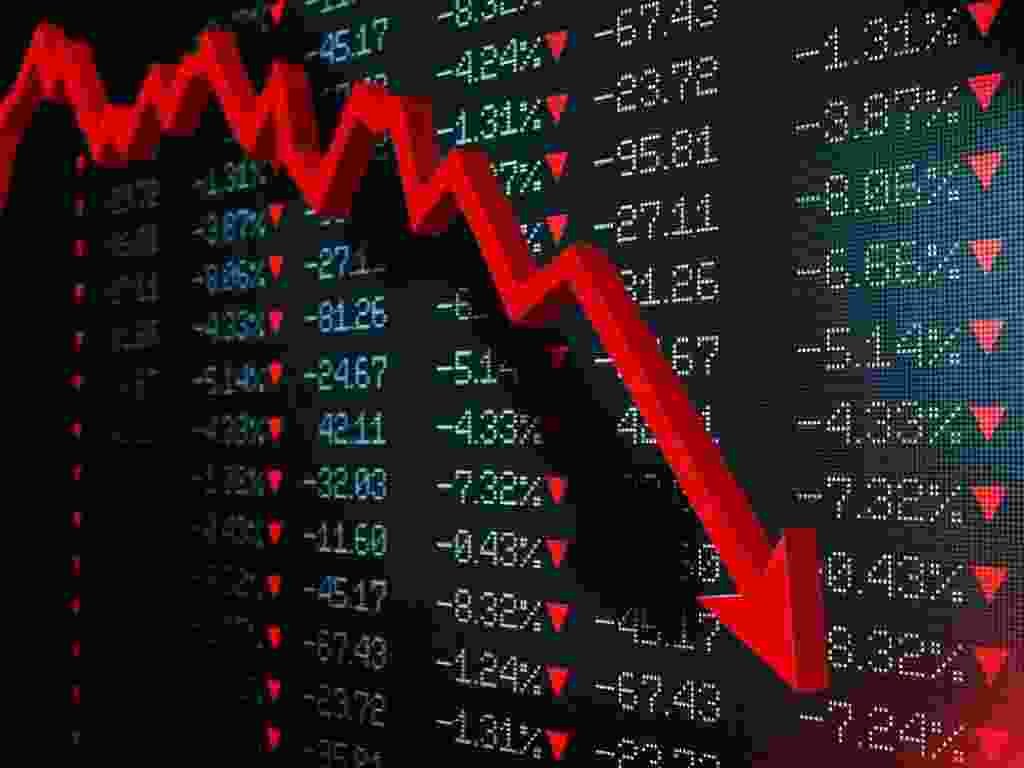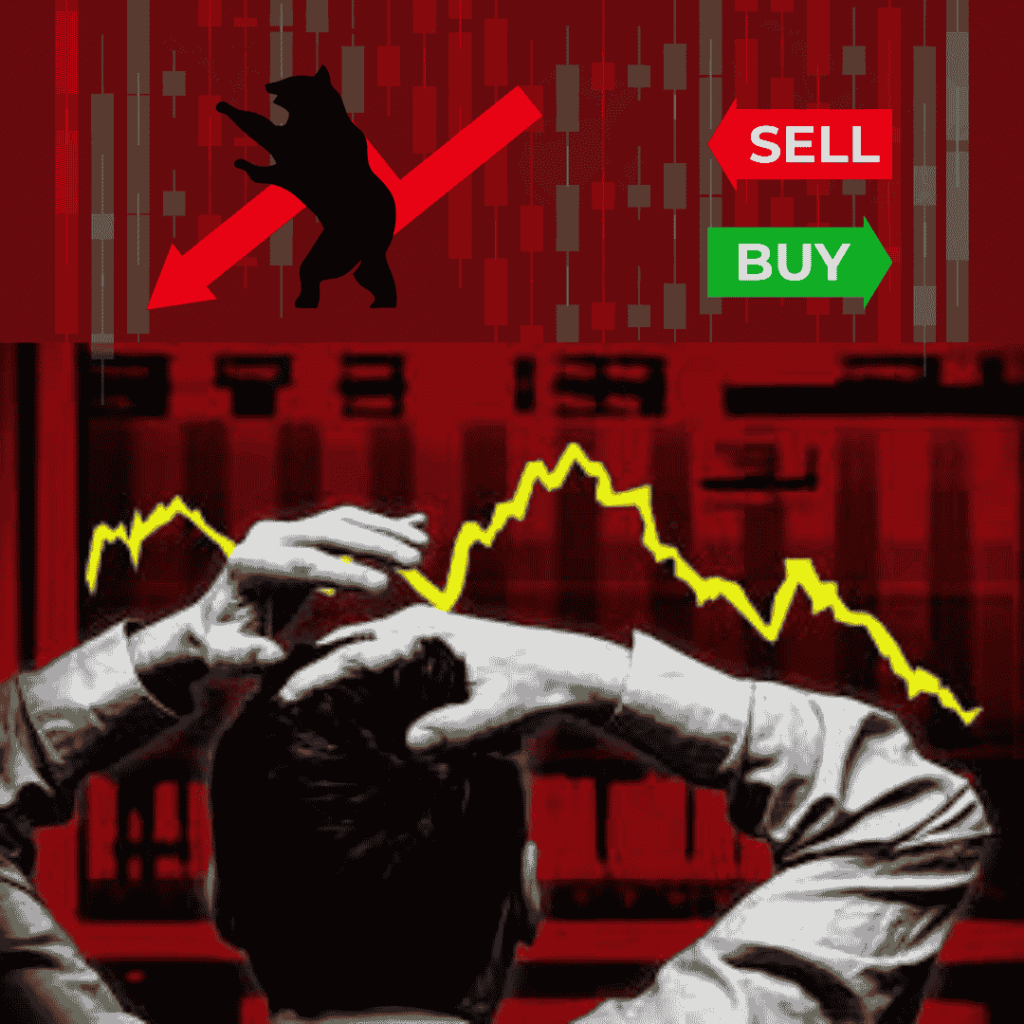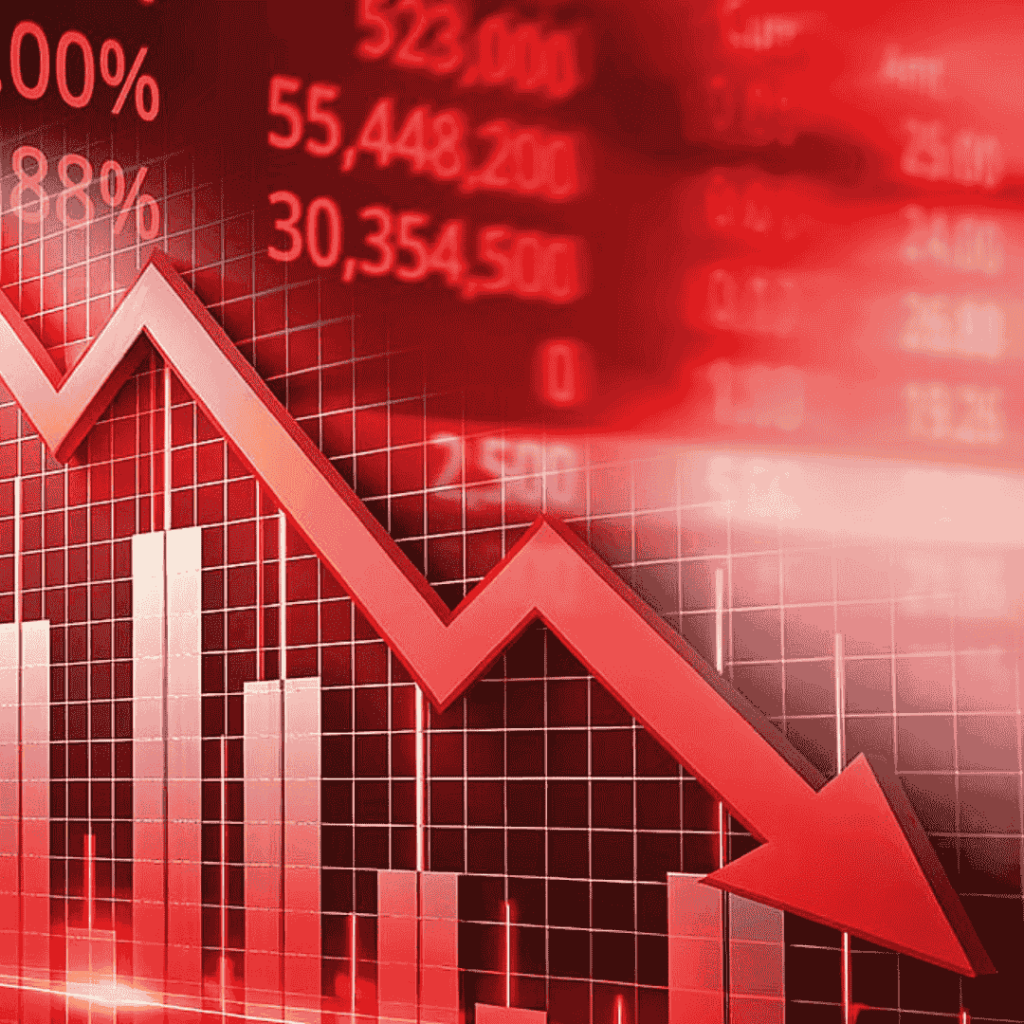The stock market is a complex ecosystem of emotions, numbers, global cues, and economic signals. One moment it’s booming with green candles, and the next, it plunges into red, wiping out investor wealth within minutes. A stock market crash is not new to seasoned traders and investors, but when it happens, it brings panic, confusion, and fear, especially among retail investors. we’ll decode:
· Why share market crash
· How investors and markets recover from it
· When a market like Nifty 50 could bounce back
· What the current data says about tomorrow’s market conditions

What is a Stock Market Crash?
A stock market crash refers to a sudden and sharp decline in stock prices across a significant portion of the market. It is characterized by panic selling, huge volumes, and negative sentiment that spreads rapidly across sectors. Crashes can be triggered by various factors, but the key is speed — the drop in prices happens fast and furiously.
Why Do Share Market Crash?
There isn’t a single reason for market crashes. It’s often a combination of factors building up pressure until the bubble bursts. Here are the most common reasons:
1. Global Economic Uncertainty
When there’s tension across global markets — such as U.S. Fed rate hikes, inflationary pressure, war, or recession fears — the ripple effect hits Indian markets too. Recently, rising crude oil prices, geopolitical risks like the Middle East conflict, and banking issues in the US have stirred volatility in our domestic indices.
2. FIIs Selling Heavily
Foreign Institutional Investors (FIIs) play a major role in our markets. If they start offloading stocks in bulk due to global concerns, currency risks, or valuation mismatches, it leads to a domino effect. Retail and domestic investors panic, leading to more sell-offs.
3. Weak Economic Data
Disappointing GDP numbers, rising fiscal deficit, or poor manufacturing and services data may reduce investor confidence. If India’s core sectors report weakness, markets respond with red.
4. Corporate Earnings Miss
If blue-chip companies post weak results, it drags down index heavyweights like Reliance, TCS, Infosys, or HDFC Bank, pulling the Nifty and Sensex down with them.
5. Technical Breakdowns
Sometimes, it’s not about news but charts. If the Nifty or Sensex breaks a major support level like 200-DMA (200-day moving average), it triggers algorithmic and stop-loss-based selling.

Stock Market Recent Example: Why is the Market Falling Now?
Over the past few trading sessions, Nifty 50 has witnessed sharp selling. Here’s a combination of what’s going wrong:
· In Stock Market, US market (Dow Jones, Nasdaq) has shown extreme weakness due to Fed’s hawkish stance.
· India VIX (volatility index) jumped, signaling fear in the market.
· Crude oil nearing $90 per barrel is a big concern for India’s inflation outlook.
· FIIs sold over ₹10,000 crores worth of stocks in a week.
· INR depreciated against the dollar, making imports costlier.
These combined factors created a panic situation, leading to sharp intraday falls in both Nifty 50 and Sensex.
How to Recover from a Share Market Crash?
While market crashes look scary, they are not the end of the world. In fact, every crash is followed by a recovery phase. Here’s how recovery typically works:
1. Patience and Long-Term Vision
Stock Markets are volatile in the short term but rewarding in the long run. If you’re invested in quality stocks with strong fundamentals, hold your ground. History shows that markets have always bounced back after a crash.
2. Review and Rebalance
Crashes give you a chance to rebalance your portfolio. Are you overexposed to small-caps or speculative stocks? Diversify into safer options like index funds, blue-chip stocks, or even gold ETFs.
3. Systematic Investment Plans (SIPs)
Continue your SIPs in mutual funds. A falling market allows you to buy more units at lower prices, which averages out your cost in the long run.
4. Buy the Dip Wisely
Don’t jump into every falling stock. Use a staggered approach (e.g., buy in 3-4 parts), and stick to large-cap companies that are market leaders in their space.
5. Track Market Sentiment
Use tools like India VIX, Put-Call Ratio (PCR), and FII/DII data to assess market mood. Low PCR and rising VIX usually signal extreme fear — and that’s often when recovery begins.

When Will the Stock Market Recover?
The recovery of Nifty 50 or broader markets depends on several conditions aligning together:
Cooling Off of Global Cues
If US inflation comes under control and the Fed pauses rate hikes, foreign inflows will return.
Crude Oil Drops Below $80
India heavily depends on oil imports. Lower crude means lower inflation, easing pressure on RBI.
RBI Maintains Interest Rates
If the Reserve Bank of India keeps rates steady and maintains a positive outlook, it will support investor confidence.
Stable INR
A stable or appreciating rupee boosts foreign investor interest.
Strong Corporate Earnings
Q4 or Q1 results from Nifty heavyweights can bring back momentum if they beat expectations.
Based on historical trends, markets usually take 2-6 weeks to recover from a sharp correction if macro conditions stabilize.
Nifty 50: What’s the Technical Outlook?
As of today, Nifty 50 has corrected significantly and is hovering around key support levels. Let’s look at the technical indicators:
· Key Support: 21,800 – 21,600 (if this breaks, next level is 21,300)
· Key Resistance: 22,200 – 22,500 (market needs to cross and sustain above this for recovery)
· 200-DMA: Around 21,650 — a crucial zone to watch
· India VIX: Above 16 suggests high volatility
Traders are advised to use strict stop-losses and avoid leverage. Investors should focus on value buying in dips.
Tomorrow’s Stock Market Outlook: April 8, 2025
Based on current global and domestic cues, here’s what you can expect in tomorrow’s market:
US Markets Impact
If the US markets (especially Nasdaq and S&P 500) recover overnight, there will be a positive sentiment in Indian markets.
SGX Nifty
Pre-market indication via SGX Nifty will set the tone. A gap-up above 22,000 could bring intraday buying.
Sector Focus
· IT Stocks: Watch Infosys and TCS ahead of earnings — could show bottoming signs.
· Banking: If bond yields cool, banks may see buying interest.
· Pharma and FMCG: Defensive plays likely to stay strong in uncertain times.
FII Activity
If FIIs turn net buyers or reduce selling, it will be a strong signal of reversal.
Stay Calm and Invest Smart
A share market crash is part of the investing journey. Instead of panicking, use this as an opportunity to review, rebalance, and reinvest smartly. Remember, some of the best wealth-building opportunities arise during market corrections. If you’re investing with a long-term vision, today’s red is tomorrow’s green.
What caused the stock market to plummet so precipitously?
The Indian stock market witnessed a massive drop on April 7, 2025, its worst one-day performance in the last ten months. The BSE Sensex closed 2.95% lower at 73,137.9, while the Nifty 50 index fell 3.24% to close at 22,161.1. Rising international trade tensions were the main reason for the decline, especially after President Donald Trump announced new US tariffs, which raised concerns about a worldwide recession.
The Tata Steel Shares’ performance
The stock of Tata Steel was particularly impacted by this market decline. The shares closed at ₹129.60, down 7.73%. With this drop, Tata Steel is now about 29.79% lower than its 52-week peak of ₹184.60, which was attained on June 18, 2024. Indicating increased investor activity, Tata Steel’s trading volume jumped to 7.8 million shares, which is much more than its 50-day average of 1.4 million shares.

Elements Affecting the Market’s Decline
A number of causes contributed to the stock market’s steep decline:
Global Trade Tensions: The United States’ imposition of fresh tariffs sparked worries about a protracted trade war and a recession in the world economy.
Investor Sentiment: The Nifty volatility index rose 66% in a single session, the biggest increase in ten years, as a result of the uncertainty surrounding foreign trade policies. Reuters
Sectoral Impact: India’s 13 main industries saw downturns, with the financial, IT, and metals sectors being the most severely impacted. One of the biggest companies in the metals industry, Tata Steel, was under a lot of selling pressure.
Prospects for the Market on April 8, 2025
Given the current volatility, it is impossible to predict with precision the moves of the market the next day. Nevertheless, in light of recent events:
Expected Volatility: As investors respond to current trade events and evaluate their possible effects on the global economy, the market may continue to fluctuate.
Sectoral Performance: Industries like IT and metals that are directly impacted by trade policies can continue to face pressure.
A Look at Investment Considerations
Investors should be cautious given the state of the market. Here are a few things to think about:
Diversification: Keeping your portfolio diverse might help reduce the risks brought on by downturns in particular industries.
Quality Stocks: Pay attention to businesses that have a solid track record of surviving market turbulence and excellent financials.
Long-Term Viewpoint: Although short-term market swings are typical, a long-term investing view can aid in navigating through these times.
Should I buy or sell Tata Steel?
There are differing views among analysts on Tata Steel:
ICICI Securities: Citing possible advantages from government programs such as the Production-Linked Incentive (PLI) scheme for the steel industry, ICICI Securities advised a ‘BUY’ rating on Tata Steel in February 2025, setting a target price of ₹190. ET Right Now
JPMorgan: On the other hand, in January 2025, JPMorgan lowered the target price from ₹170 to ₹155 while maintaining a ‘OVERWEIGHT’ rating, indicating worries about pressures on prices and global steel demand.
Stock Market Crash FAQ
1. What is a Stock Market crash?
A Stock Market crash refers to a sudden, steep decline in stock prices across major indices. It’s usually triggered by panic selling, negative global cues, or economic concerns. During such crashes, investor sentiment turns fearful, leading to sharp declines in benchmark indices like the Sensex and Nifty 50.
2. Why did the Stock Market crash recently?
The recent Stock Market crash was primarily caused by rising global trade tensions, especially after new U.S. tariffs were announced. Additionally, heavy FII selling, volatile crude oil prices, and a depreciating rupee intensified the market downturn, creating widespread panic among investors.
3. How does global uncertainty impact the Indian Stock Market?
Global uncertainty, such as U.S. Federal Reserve rate hikes, wars, or recession fears, impacts the Indian Stock Market by triggering foreign outflows. Since India is deeply integrated into the global economy, negative developments abroad can spark volatility at home.
4. Is it a good time to invest after a Stock Market crash?
Historically, Stock Market crashes have presented long-term buying opportunities. If you invest in fundamentally strong companies or index funds during market downturns, you can benefit from lower valuations and potential future recoveries. However, always do proper research and consider staggered investments.
5. How can I protect my portfolio during a Stock Market crash?
Diversification is key to protecting your portfolio. Avoid concentrating your investments in a single sector. Include defensive sectors like FMCG and pharma, use SIPs for disciplined investing, and focus on quality blue-chip stocks to weather Stock Market volatility.
6. How long does it take for the Stock Market to recover after a crash?
The recovery period depends on macroeconomic factors. Typically, if global cues stabilize and corporate earnings improve, the Stock Market can recover in 2–6 weeks. Historical data shows that patient investors often see strong rebounds after periods of panic selling.
7. What is the role of FIIs in the Indian Stock Market crash?
Foreign Institutional Investors (FIIs) play a significant role in the Indian Stock Market. When FIIs turn aggressive sellers, due to global uncertainties or currency depreciation, it adds pressure on domestic indices, causing wider market declines.
8. Should I continue my SIPs during a Stock Market crash?
Yes, continuing your SIPs during a Stock Market crash is advisable. Lower market levels allow you to accumulate more units at cheaper prices, reducing your average cost over time and positioning you well for the eventual market recovery.
9. How do technical indicators signal a potential Stock Market crash?
Technical indicators like the 200-day moving average (200-DMA), India VIX (Volatility Index), and support/resistance levels can offer early signs of Stock Market stress. A breach of key support zones often triggers algorithmic selling, accelerating the fall.
10. What should investors watch for in tomorrow’s Stock Market session?
Investors should track US market performance, SGX Nifty trends, FII activity, and sector-specific developments like IT earnings or crude oil prices. Positive cues in these areas could signal short-term relief, while continued weakness may extend Stock Market volatility.
11. How does the global economy influence the Indian Stock Market?
The global economy has a direct impact on the Indian Stock Market. Factors like U.S. Federal Reserve interest rate decisions, global inflation trends, crude oil prices, and geopolitical tensions such as wars or trade disputes can influence foreign investor behavior. When global risks rise, Foreign Institutional Investors (FIIs) tend to pull out of emerging markets like India, leading to market volatility.
12. What role does investor sentiment play in Stock Market crashes?
Investor sentiment is a major driving force in the Stock Market. Panic selling, fear of losses, or over-optimism can lead to rapid price swings. During uncertain times, negative sentiment amplifies market declines as investors rush to exit positions. Tools like the India VIX (volatility index) measure this sentiment and help investors gauge potential market moves.
13. Can technical analysis help predict Stock Market crashes?
Yes, technical analysis can provide early warning signs of potential Stock Market corrections. When key support levels, like the 200-day moving average, are breached, it often triggers automated selling and alerts traders to a potential downtrend. While it cannot predict exact events, technical indicators are valuable tools to understand market momentum and risk levels.
14. Is it wise to continue SIPs during a Stock Market crash?
Absolutely. Continuing your Systematic Investment Plans (SIPs) during a Stock Market downturn can be beneficial in the long run. Falling markets allow you to accumulate more units at lower prices, which helps in averaging down your cost. Over time, as the market recovers, this strategy can significantly boost your returns.
15. What is the historical recovery time after a Stock Market crash?
Historically, the Stock Market has shown resilience after crashes. Depending on the severity of the crash and macroeconomic conditions, markets typically take anywhere from a few weeks to a few months to recover. For example, if global tensions ease and domestic factors stabilize, indices like the Nifty 50 can bounce back within 2–6 weeks.





